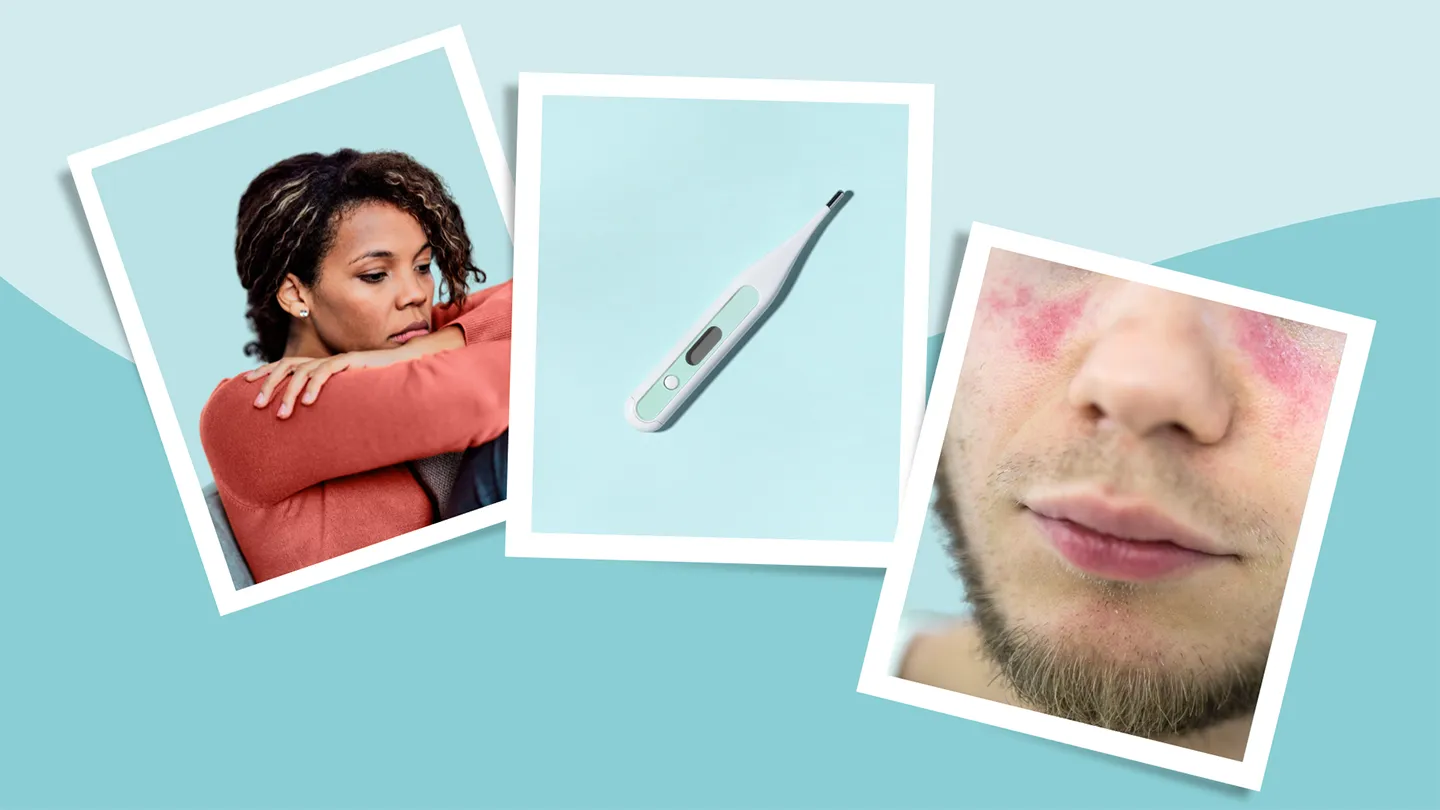Here’s what to know about the most common early signs of lupus, to help you better identify and learn about symptoms that might indicate the disease.
Cutaneous Rash
Estimates suggest that between 40 and 70 percent of people with lupus will notice that their symptoms get worse in the sun or in some types of artificial light.
One main type of lupus, cutaneous lupus erythematosus, is limited to skin symptoms, including a rash and lesions.
People with cutaneous lupus most commonly develop a discoid rash. It appears as round, raised, red patches, usually above the neck. Discoid rashes can cause scarring, but they usually aren’t itchy or uncomfortable.
Another subtype of cutaneous lupus is subacute cutaneous lupus, and people with it will develop thick, scaly, red lesions that usually don’t itch or scar.
Malar Rash (Butterfly Rash)
About 50 percent of people with systemic lupus erythematosus (SLE) experience a malar rash, also called a butterfly rash. It spreads across the bridge of the nose and cheeks and is a telltale sign of the disease because its appearance is so distinctive.
A malar rash can be flat or raised, and it can itch or burn, causing pain. It can also appear on other parts of the face.
Fatigue
Up to 90 percent of people with lupus experience fatigue. Fatigue may be brought on by the disease itself or from medication or associated physical or mental factors.
Fever
Sore and Stiff Joints
Most people with lupus will experience joint inflammation at some point.
Inflammation associated with lupus can cause stiffness, swelling, pain, and warmth of the joints, most commonly in the:
- Fingers
- Hands
- Wrists
- Elbows
- Ankles
- Toes
Raynaud’s Syndrome
People with Raynaud’s are extremely sensitive to cold temperatures and, in those conditions, will often notice a loss of circulation and loss of color in their digits much more quickly than people without the condition.
Headaches
Some people with lupus may experience headaches caused by inflammation of the blood vessels in the brain, also known as vasculitis. It could also cause thrombosis, which is characterized by blood clots within these blood vessels.
Mouth or Nose Sores
People with SLE may experience mouth or nose sores. Let your doctor know about any sores you notice.
Hair Loss
The inflammation of the skin associated with lupus can sometimes result in hair loss. Once lupus is treated, the hair may grow back. But discoid rash may cause scarring on the scalp and permanent hair loss.
Some of the medications used to treat lupus may also cause the hair to fall out, though this is sometimes temporary.
Read the full article here




